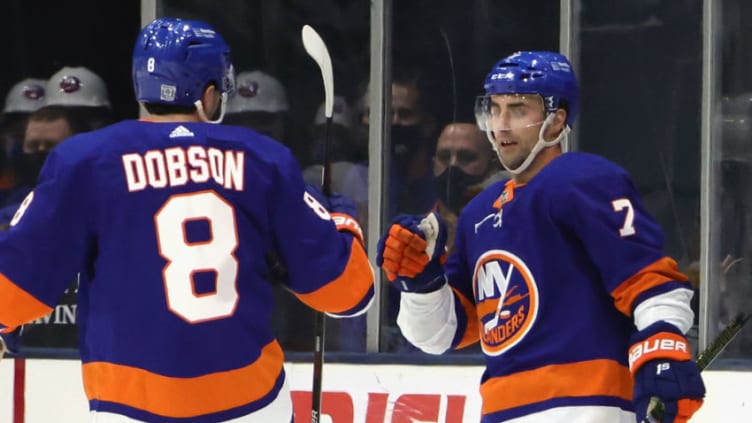Islanders: Analyzing Power-Play Changes that led to Saturday’s GWG

The New York Islanders power-play closed out the month of January on a 2/18 run that helped contribute to a five-game losing streak. In two games since we turned the calendar to February, the team has had two man-advantage opportunities, and scored once, on February 6 versus Pittsburgh.
Back in mid-January, I wrote an analysis piece based off the writing of Shawn Ferris, who talked about the flaws of modern NHL power-plays. In particular, Ferris spoke about the 1-3-1, or umbrella, the NHL’s widely-adopted power-play formation, and its inherent shortcomings.
Most interesting to me was his take on the future of NHL power-plays, in which he doesn’t see the role of the bumper surviving. Armed with Shawn’s insights, my analysis focused on the Islanders in the 1-3-1, and why the formation may have been handcuffing them.
In the two games since February began we’ve seen some different looks from the Islanders power-play, particularly the top unit, which scored Saturday’s late game-winner over the Penguins. I went back and re-watched that unit operate, and saw some familiar looks from Shawn’s article.
New York Islanders power-play abandoned the bumper
If you go back and watch the Islanders power-play in action on Saturday night, likely the first thing you’ll notice is how much looser the formation is. Gone from the top unit is that traditional bumper role which once made the structure of the formation so rigid.
Saturday, as Shawn succinctly pointed out, the Islanders lined up with two players low, two high, and Mat Barzal moving himself to wherever he saw fit, almost like a 19th-century rover.
Using his strong skating, passing, and hockey IQ, Barzal drifted into all different parts of the Penguins zone. I went back and tracked every pass made on Saturday’s :59 of 5v4 time for New York. In total, Barzal touched the puck six times, or 23% of all Islanders touches, and in four different locations in the offensive zone, more than any other Islander.
Using this freedom, the Islanders no. 13 created new passing lanes and shooting options for his team.
More than once he created an option for a teammate who was pressured by nearby Penguins defenders. Had Barzal not been available for a pass, these situations could’ve become turnovers, potentially causing a clearance for the Penguins and a reset for the Islanders, as it did on Monday’s game at the Rangers.
We’ve all seen how poorly the Islanders enter the offensive zone at 5v4, so minimizing the number of times that has to happen is crucial to this unit’s success. Unsurprisingly, the top unit didn’t have to execute a single controlled zone entry on Saturday’s power-play.
Interestingly, Barzal occupied the bumper’s spot only once throughout the entire :59 of 5v4 time, and he didn’t get a touch from it. This is fascinating because Jordan Eberle, playing the right side at the top of the umbrella, touched the puck seven times, more than any other Islander.
This means that seven times the puck was on Barzal’s shooting side, and he only opted to create that shooting option from the bumper once.
Rather, Barzal seemed to prefer to shade to the far-side post each time Eberle received a pass at the right circle, opening a passing option behind the net. Or he would drift toward Eberle and into his right-side corner, creating a passing option with a built-in carrying lane behind the net, which he used more than once.
Based on what I saw, the Islanders top unit appears to be embracing a different, bumper-less formation. On Monday against the Rangers, the top unit only saw around 25 seconds of O-zone possession, but in that time Barzal again was operating wherever he felt needed.
He briefly occupied the high-slot, the rover’s typical location, before abandoning it to create a new passing option for Noah Dobson.
The top unit didn’t see the same degree of success on Monday as it did Saturday. But time and repetition will only help this unit become more accustomed to a bumper-less formation, and that could help to alleviate some of their woes at 5v4. At the very least, it appears Jim Hiller has them trying it out.